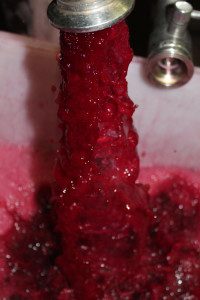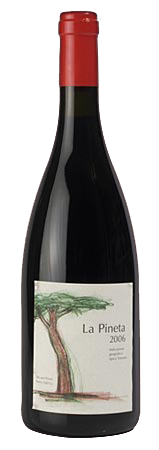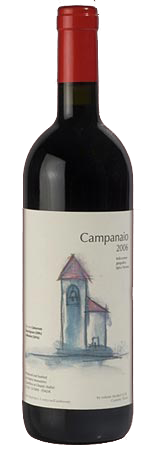

The Podere Monastero estate is situated in Castellina in Chianti, in the heart of Tuscany, about 500 metres above sea level. It was established in 2000 by its owner, oenologist Alessandro Cellai, with the sole aim of making two great wines. The vineyards occupy an area of 3 hectares, 1.5 of which used for the cultivation of Pinot Nero, while the remaining 1.5 are cultivated with Cabernet Sauvignon (50%) and Merlot (50%).
The choice of land was of fundamental importance, as was (to an even greater extent) the choice of the clones and rootstocks, requiring extensive research, which was carried out among the most prestigious plant nurseries in France. Pinot Nero, whilst finding it difficult to adapt to conditions in Italy, is considered to be one of the best grape varieties in the world, capable of producing wines of extraordinary elegance and harmony.
Indeed, the challenge was to produce an excellent wine in a land famous for other grape varieties but not for this particular variety – Pinot Nero. To succeed, we had to approach every single operation with meticulous attention, first in the vineyard and then in the cellar.
La Pineta
La Pineta (the name of the wine made of 100% Pinot Nero) is created with this philosophy; every vine is tended right from pruning, setting out immediately to create a product of the very highest quality. The training system is strictly Guyot, never exceeding 6-7 buds per vine; the production per plant is around 400 grams which, after being harvested exclusively by hand, undergo temperature-controlled alcoholic fermentation in vats made of French oak (Allier) for about 14 days. After being racked, the wine is transferred into barriques (also made of Allier oak which has undergone medium toasting) where malolactic fermentation takes place. At the end of this process, the wine is decanted and returned to barriques for a further 9 months before being bottled.




Campanaio
Campanaio (the name of the wine made of 50% Merlot and 50% Cabernet Sauvignon), despite being made with grape varieties more common to the Chianti production zone, is also the result of meticulous attention right from the choice of the rootings. The training system used is the spurred cordon and the maximum production per plant never exceeds 650 grams .
Temperature-controlled fermentation takes place in steel, for about 2 weeks, while malolactic fermentation and the relative maturing process, which lasts a further 12 months, take place in barriques, 50% of which are made of American oak with the remaining 50% being made of French oak (Allier).
In this wine, one immediately perceives great structure and complexity, even though the sweetness of the tannins conveys great smoothness and elegance right from the first stages of maturing.
These are two wines of considerable personality, which do their utmost to fully enhance the particular characteristics of the grape varieties of origin, without disguising the positive aspects of the local “terroir”.
